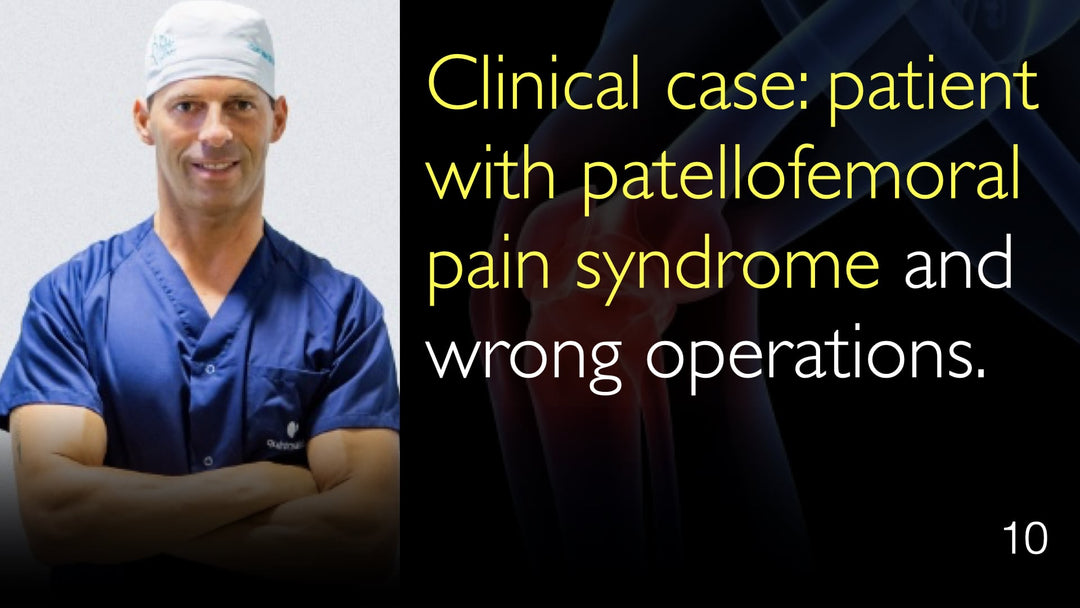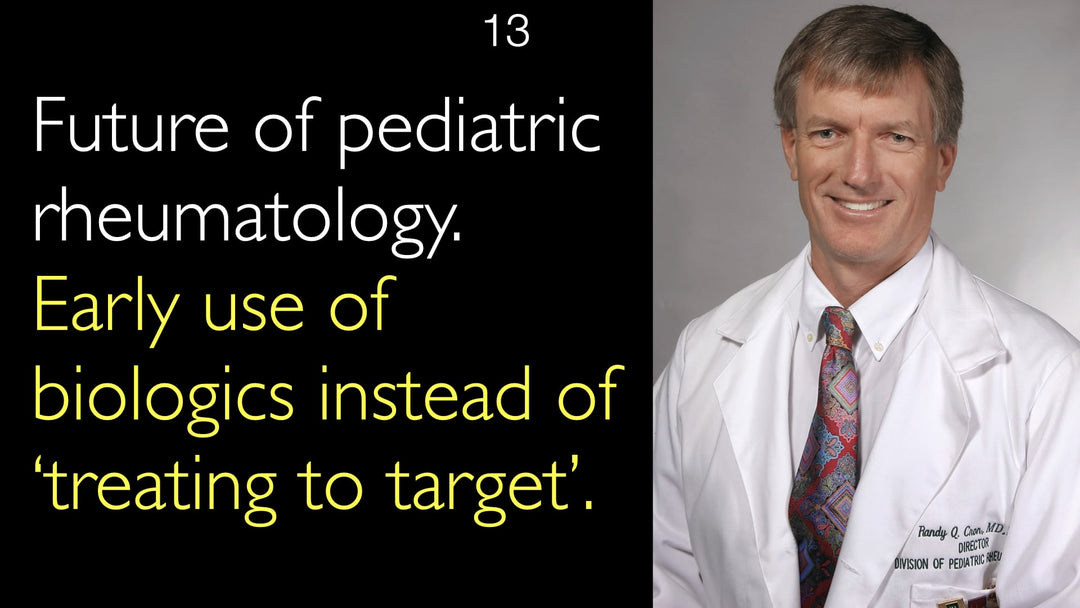Leading expert in knee surgery and cartilage restoration, Dr. Pablo Gelber, MD, explains how a complex osteochondral allograft transplantation successfully restored function and alleviated chronic pain in a young patient with severe patellofemoral pain syndrome after multiple failed surgeries, highlighting the holistic impact of effective orthopedic treatment on a patient's physical and psychological well-being.
Osteochondral Allograft Transplantation for Severe Patellofemoral Pain and Cartilage Damage
Jump To Section
- Patient Journey from Mild Pain to Severe Disability
- Impact of Multiple Failed Knee Surgeries
- Fresh Osteochondral Allograft Transplantation Procedure
- Functional Recovery and Return to Normal Life
- Psychological Impact of Chronic Knee Pain
- Importance of Correct Initial Treatment Choice
- Holistic Approach to Knee Problem Treatment
Patient Journey from Mild Pain to Severe Disability
A 29-year-old male patient's clinical case began with mild patellofemoral pain syndrome that progressively worsened into a severe degenerative condition. Dr. Pablo Gelber, MD, details how the patient initially experienced limitations only during high-impact activities like running and cycling. The condition deteriorated over time and through multiple surgical interventions, ultimately leaving the patient unable to walk more than 50 meters without crutches and requiring morphine-based painkillers for daily function.
This degenerative process eventually expanded beyond the patellofemoral joint to affect both femoral condyles, creating a complex knee problem that required comprehensive surgical solutions.
Impact of Multiple Failed Knee Surgeries
The patient underwent four previous surgical operations that failed to address his underlying patellofemoral disease condition effectively. Dr. Pablo Gelber, MD, explains that three of these procedures were inadequate for the patient's specific knee problem, while the fourth surgery was necessitated by a postoperative infection that required extensive knee cleaning and irrigation.
These unsuccessful treatments resulted in the patient being unable to work for 18 months prior to presenting to Dr. Gelber's care, demonstrating how improper surgical management can significantly worsen outcomes in patellofemoral pain syndrome cases.
Fresh Osteochondral Allograft Transplantation Procedure
Dr. Pablo Gelber, MD, performed a complex fresh osteochondral allograft transplantation to address the extensive cartilage damage in the patient's knee. This surgical solution involved a triple cartilage transplantation that included the patella and both femoral condyles, making it one of the most comprehensive cartilage restoration procedures available for severe degenerative joint conditions.
The transplantation utilized donor tissue to replace the damaged articular surfaces, providing biological resurfacing that can restore joint function and alleviate pain in young patients with advanced cartilage loss.
Functional Recovery and Return to Normal Life
Following the osteochondral allograft transplantation, the patient demonstrated remarkable functional improvement within 2.5 months postoperatively. Dr. Pablo Gelber, MD, reports that the patient transitioned from being dependent on crutches to walking independently and expressing readiness to return to work. While full restoration of knee function may not be achievable given the severity of the initial condition, the surgical treatment provided sufficient improvement for normal daily activities and occupational function.
The expected timeline for return to work was projected for January 2021, representing a significant milestone in the patient's recovery journey.
Psychological Impact of Chronic Knee Pain
The psychological dimension of chronic knee pain and disability represents a critical aspect of comprehensive patient care that Dr. Pablo Gelber, MD, emphasizes. The patient's dependence on strong pain medication and inability to maintain social relationships created substantial psychological burden alongside physical limitations. Successful surgical treatment addressed not only the anatomical defects but also alleviated the mental health consequences of long-term disability.
This case illustrates how effective orthopedic intervention can restore both physical function and psychological well-being, enabling patients to reengage with normal social activities and relationships.
Importance of Correct Initial Treatment Choice
This clinical case underscores the critical importance of selecting appropriate initial treatments for patellofemoral pain syndrome. Dr. Pablo Gelber, MD, notes that patellofemoral problems are often inadequately addressed in their early stages, leading to progressive deterioration and complex secondary problems. The patient's journey highlights the challenges individuals face when navigating treatment options and selecting qualified surgical specialists.
Proper initial management of patellofemoral conditions can prevent the cascade of complications that ultimately required extensive surgical reconstruction in this case.
Holistic Approach to Knee Problem Treatment
Dr. Pablo Gelber, MD, advocates for a holistic treatment philosophy that focuses on restoring overall quality of life rather than merely addressing isolated anatomical structures. He emphasizes that patients seek medical care not because they have torn menisci or ligaments, but because they cannot maintain normal daily activities. This perspective informs his surgical approach, where procedures like meniscus repair or cartilage transplantation serve as means to achieve broader life restoration goals.
Dr. Gelber's discussion with Dr. Anton Titov, MD, reinforces that successful orthopedic care must consider the forest beyond the trees, addressing the whole patient experience rather than focusing exclusively on specific joint structures.
Full Transcript
Dr. Anton Titov, MD: Is there a patient story you could discuss? A story that illustrates knee injury topics that we discussed today. Perhaps a composite of clinical cases that you often encounter in your practice.
Dr. Pablo Gelber, MD: I would like to recall this story from yesterday. There is an online platform here in Spain where people leave comments about different doctors. I was very emotional because there was a patient I operated on a few months ago. He is 29 years old. He had several surgery operations and had been looking for help in different countries in Europe.
He was not able to walk more than 50 meters without the help of crutches and was really in pain. He was using morphine-based painkillers. He had, I think, four or five different surgeries before he came to see me.
We provided him fresh osteochondral allograft transplantation. It was a very large cartilage transplantation because it was a triple cartilage transplantation. This patient wrote yesterday a comment saying that he is now back mostly to a normal life. This treatment could bring him to be functional again.
We helped him not only from a functional point of view but also from a psychological point of view. That is also very important to consider. When we provide nice treatment solutions, we are not only providing treatment specifically for the knee joint.
We are talking about young patients, the young population. This kind of knee problem treatment can provide them with a normal style of life. You are putting them back not only to their physical activity but also helping from a psychological point of view. They return to normal relationships with their friends and with life.
That is the story that I would like to share because sometimes we forget about that. We focus too much on the meniscus, on the ligament, on the cartilage. But that is just a way to obtain good physical and mental improvement in the patient at the end.
Patients don’t come to the office because their meniscus is torn or the ACL is torn. They come because they cannot do a normal life. You read this kind of positive reviews or commentaries, and you just remind yourself that you are doing something good, not just for the meniscus.
Again, repairing the meniscus is only a way to get that life back for the patient. When you read that comment, you feel that you are doing something good.
Dr. Anton Titov, MD: That is true! It is so inspirational to treat holistically. We have to treat the whole patient rather than focusing on an organ or system of the organs. We have to see the forest behind the trees, as you mentioned in our conversation.
What was this patient’s initial underlying problem? What prompted him to have several surgeries before he reached out to your office?
Dr. Pablo Gelber, MD: He had a patellofemoral disease condition. Unfortunately, patellofemoral problems are not sometimes well addressed. He had three different knee surgeries that I didn’t consider good. Those knee surgeries could not provide an improvement in that case.
The fourth surgery was done because of an infection. At the fourth surgical operation, surgeons had to clean and to wash the knee. Then the patient’s disease affected not only the patellofemoral joint but also both femoral condyles.
Something started with mild patellofemoral pain, but it ended up with a full degenerative condition in the patellofemoral joint and also in both condyles. In the beginning, when he looked for medical advice, he was only unable to run and to use his bike.
When all that disease process ended, he was not even able to walk and to work. He had been off his work for 18 months at the time when we operated on him. He is still off work because we operated on him 2.5 months ago.
But he says he’s willing to go back to work, and we expect him to be back to work after New Year. So in January 2021, I hope. We transplanted the patella and also both condyles.
As I said, he is now walking without crutches. We expect his knee function not to be fully restored because he had a very severe knee problem. But at least at some point, he could do some normal life and work.
All that underscores the importance of choosing the treatment wisely. It underscores how difficult it is for patients to choose the correct treatment with the correct physician or surgeon. It’s a very complicated process.







